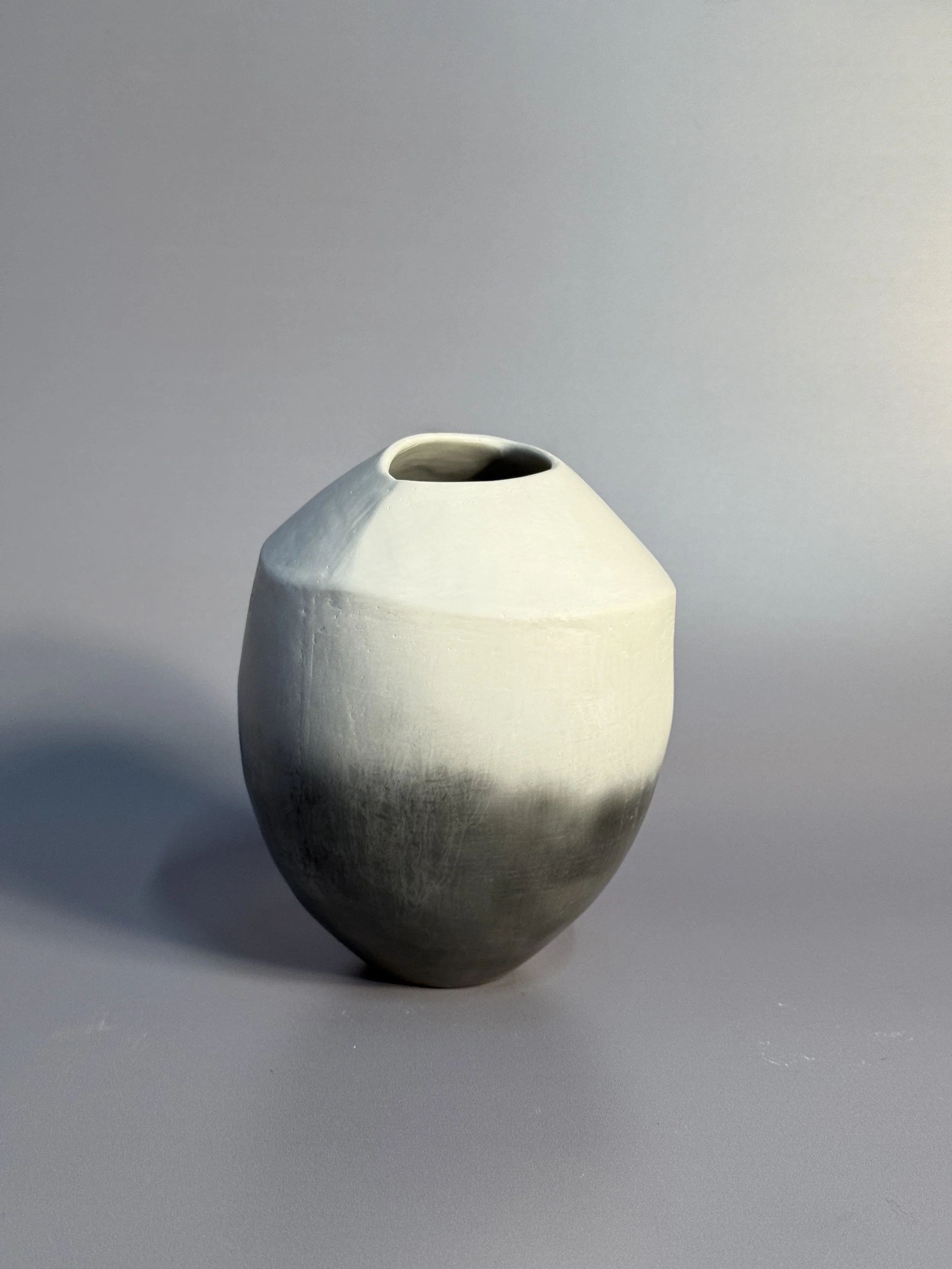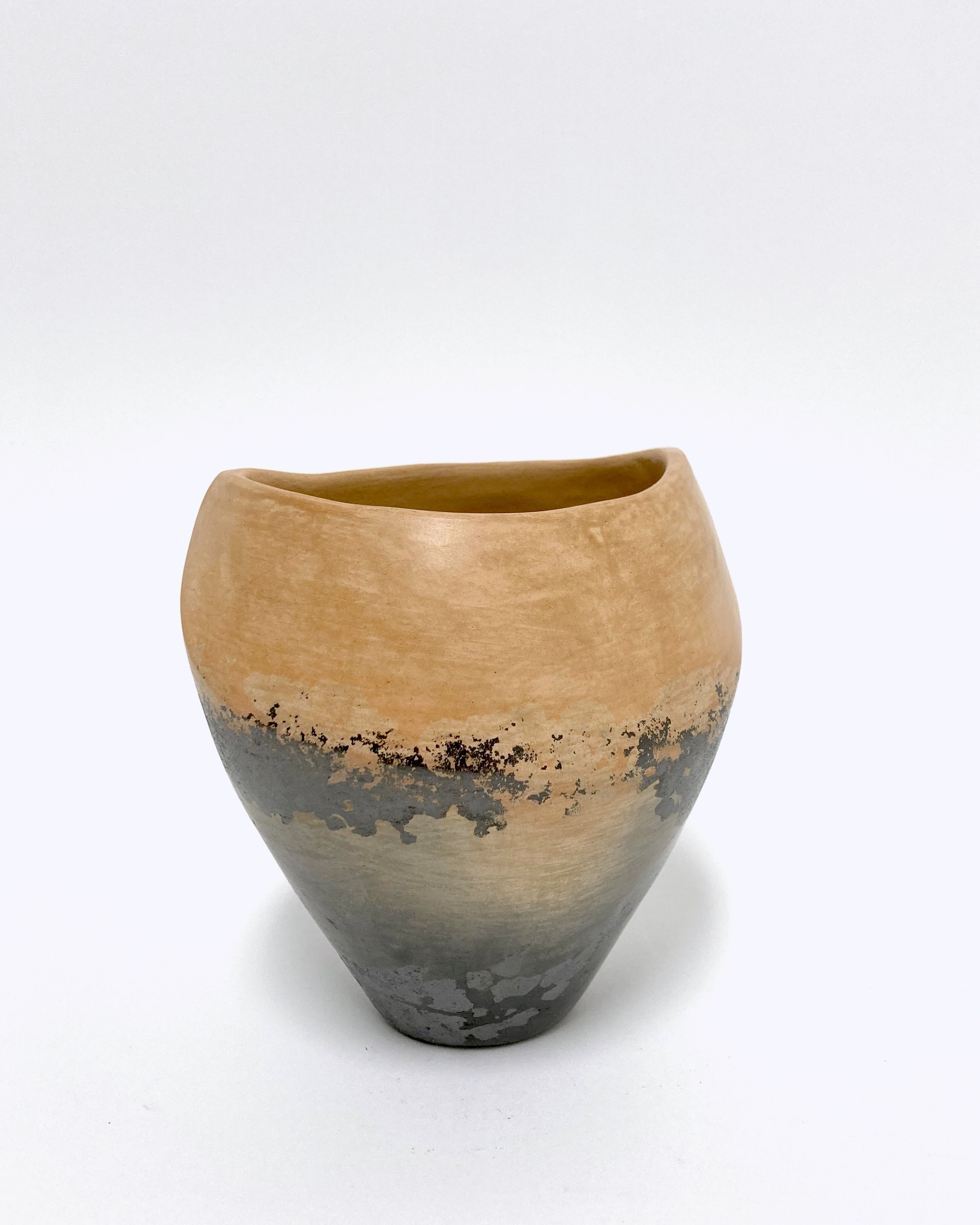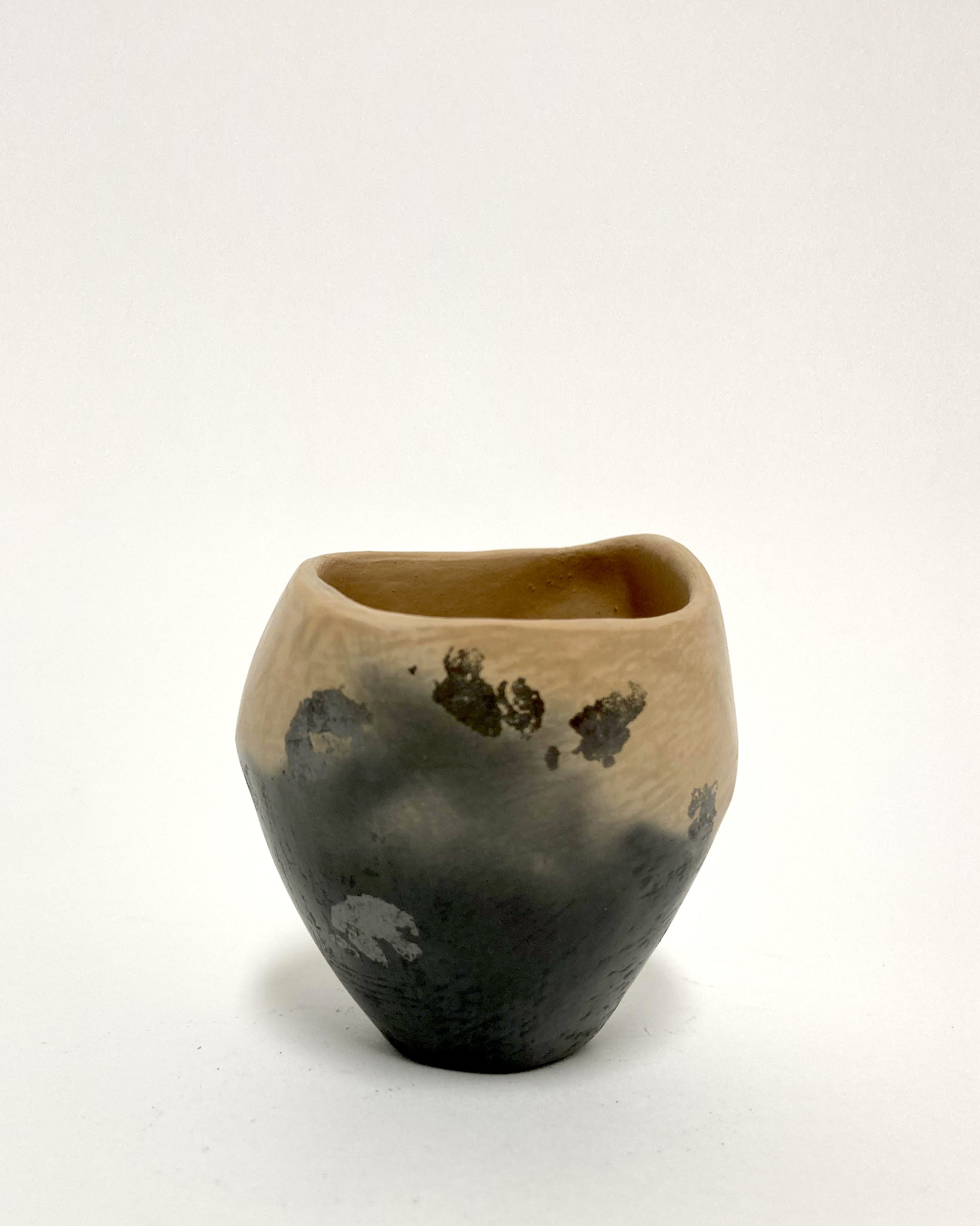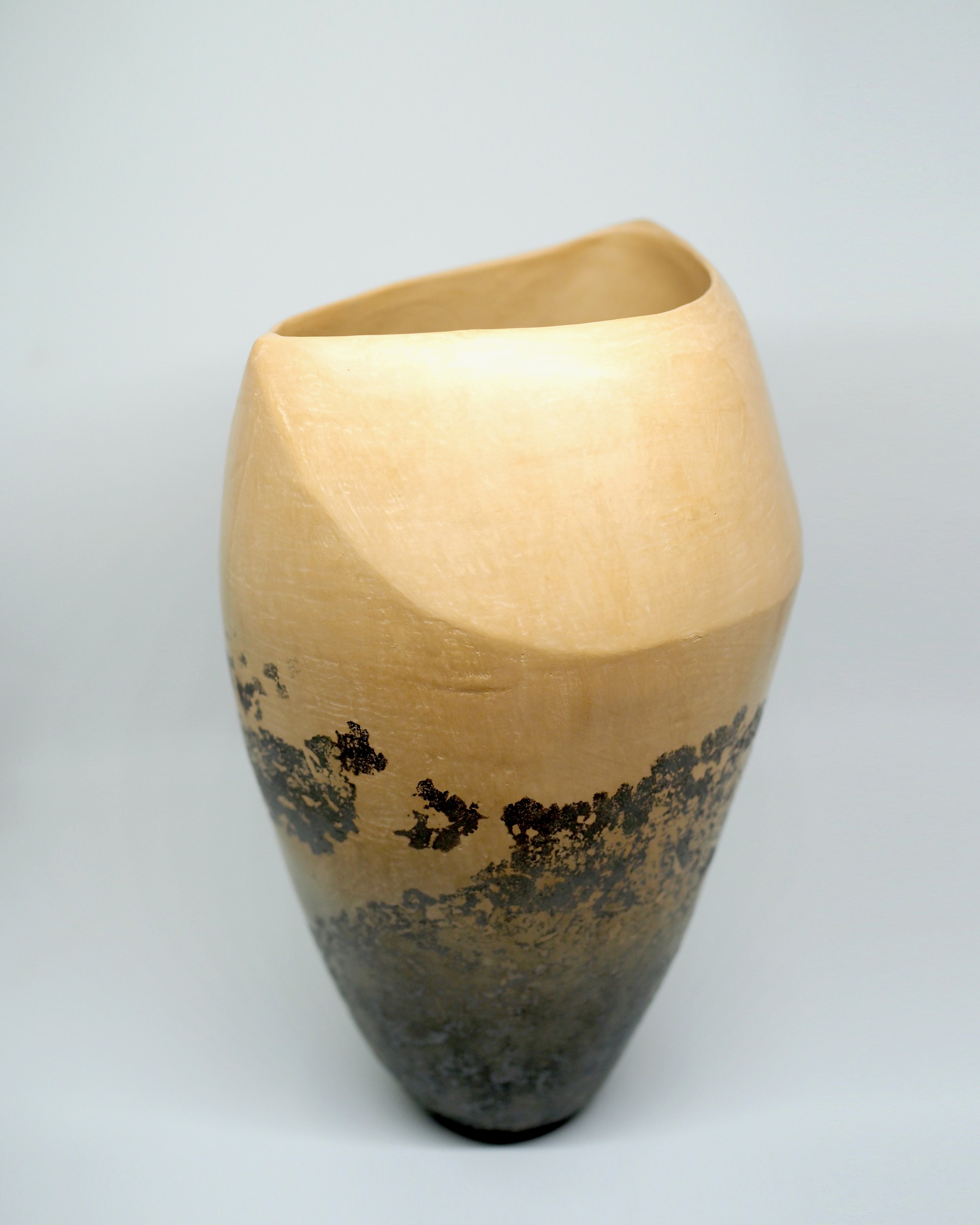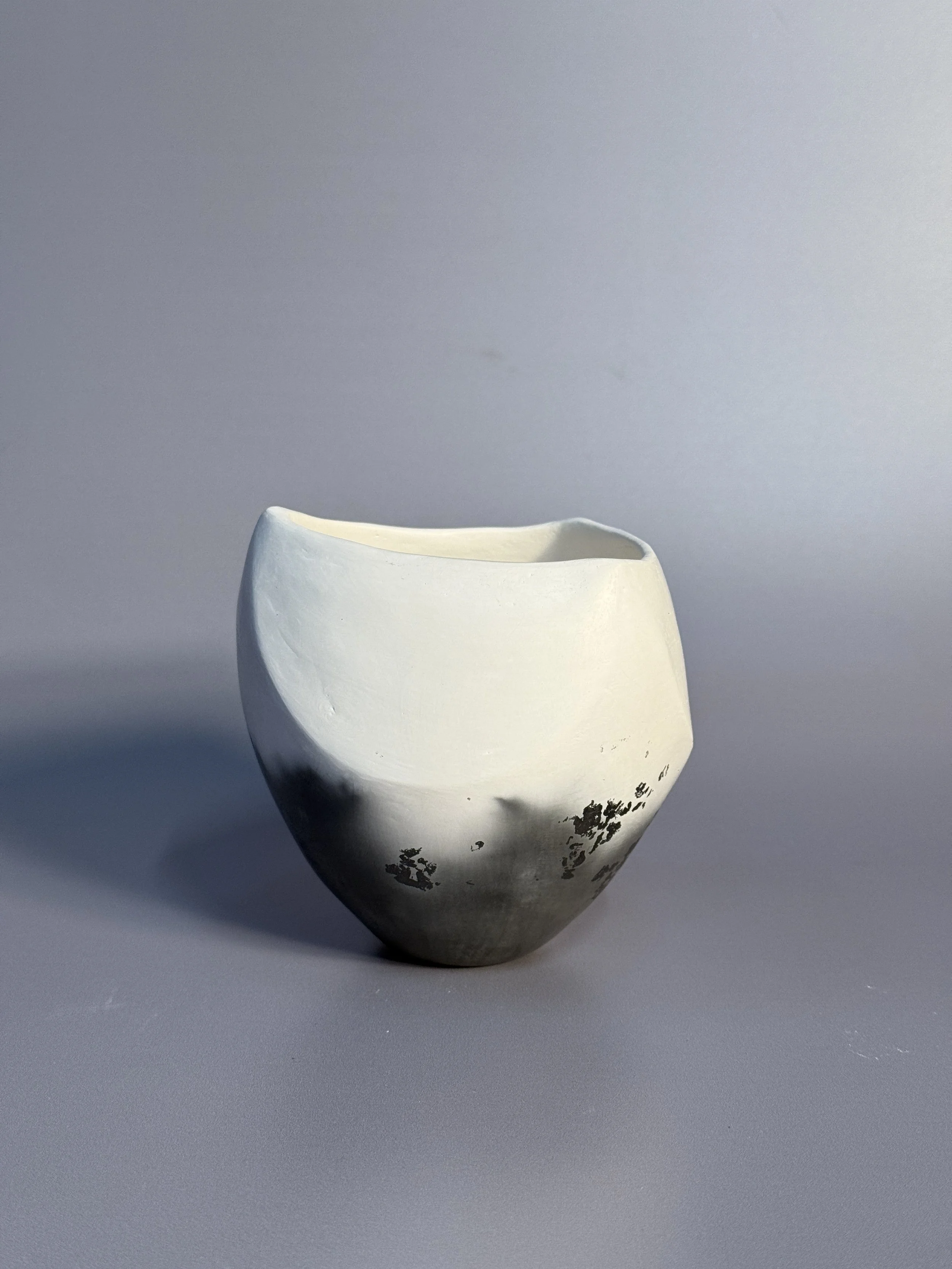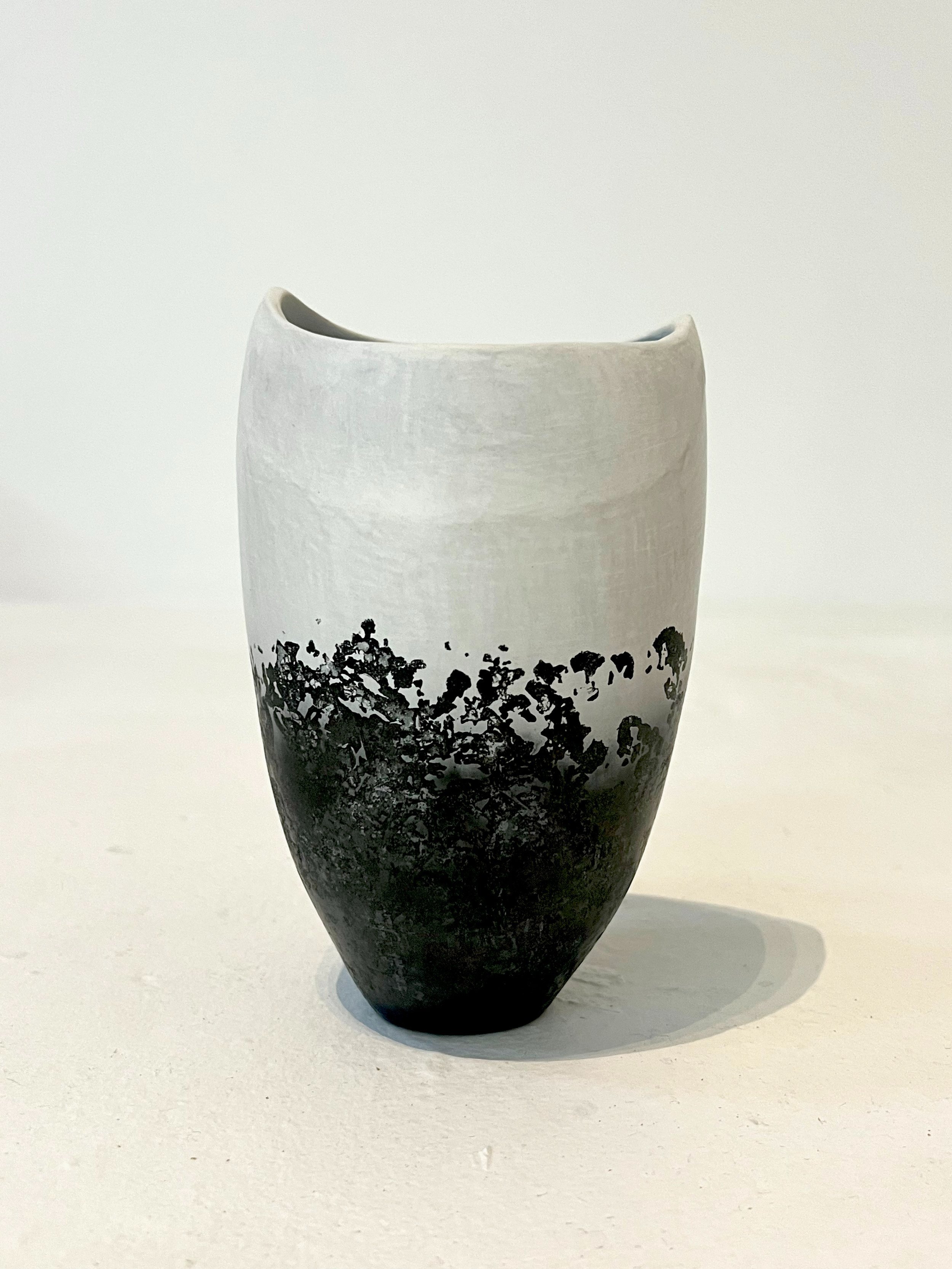
How nature works
VICTORIA LYNAGH
How nature works, 2023
burnished Keane’s PB103, Terra sigillata, Saggar fired with sawdust and rice
17 x 10.5 x 10 cm
SOLD

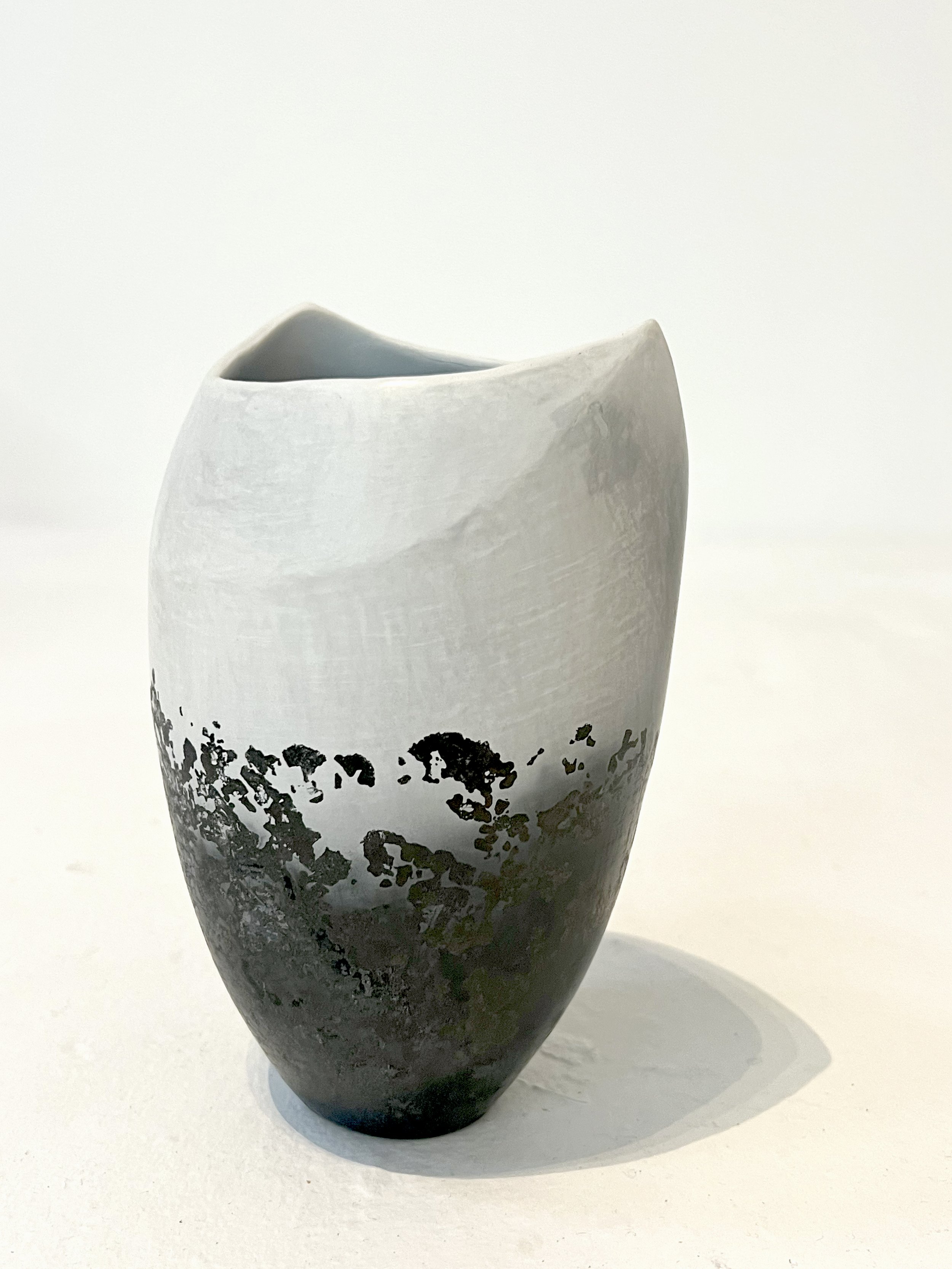
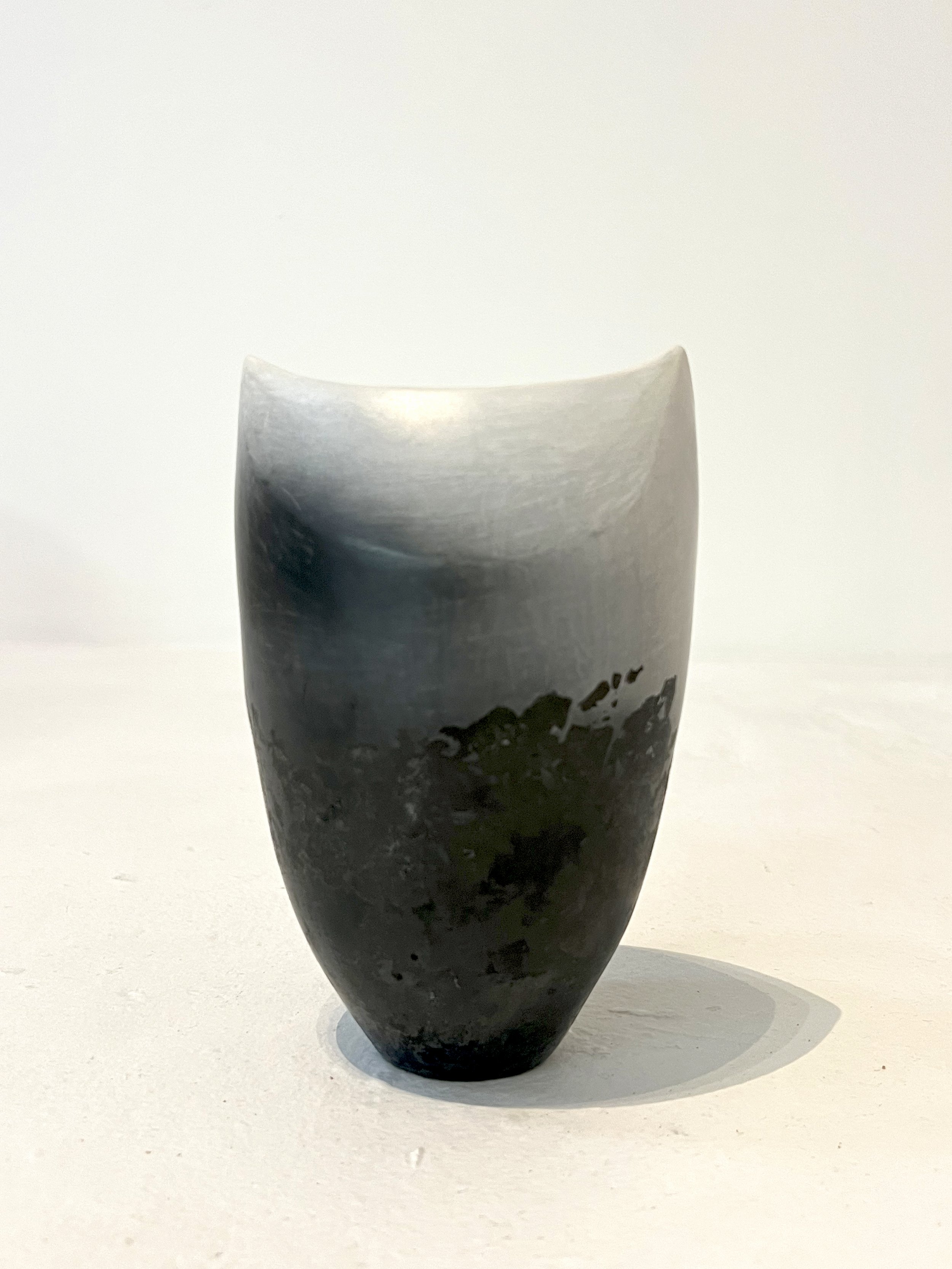

Additional Info
Climate change is one of the most profound and challenging issues facing humanity. Victoria Lynagh's work has developed from concerns surrounding the changing landscape and the increased prevalence of naturally occurring bushfires in Australia. Further influence comes from the debate on the historical use of controlled burns by indigenous peoples to manage the natural environment in a way that benefits humans and wildlife. Many ecosystems have evolved with fire as an essential contributor to habitat vitality and renewal, with plant species regenerating in fire-affected environments when the resultant ash is used as a source of nutrients to germinate, establish or reproduce.
The importance of the effects of fire on the ecological landscape is represented in her work. The blackened debris caused by fires, and the re-growth in the landscape that can follow, is illustrated in the partly carbonised sculptural forms that bleed into the natural colours of the land.
Taking inspiration from the ancient and simple approaches used for land regeneration, Lynagh employs traditional hand-building ceramic methods.
The works are made from a range of different clay bodies illustrating the array of colours that occur naturally in the Australian landscape. All pieces are pinched, paddled, altered and refined before the surfaces are enhanced by the introduction of an earthy-toned palette of refined slips and terra sigillata. This enables the use of clay in solid and liquid forms within each piece. They are then burnished, to create a glossy patina, which reflects the light and creates shadowed areas. Through their form and finish, the sculptural objects invite touch through their tactile and flawless surfaces and subtle, earthy beauty. Low-firing the pieces in a saggar with a range of organic combustible materials results in the works retaining the marks of the making process and reinforces the connection between the raw materials used and the earth they are taken from.
In a world where the pace of life is constantly increasing, I find the simple hand-building techniques used in creating these pieces meditative. The simplicity and apparent effortlessness of the objects are born out of a labour-intensive method, where the repetitive and rhythmic nature of making imbues the surface with a sense of time. It is a process that cannot be rushed. The ‘smoking’ effect on the object's surface cannot be pre-determined. In a way, it reflects a wildfire – a process that cannot be controlled but can result in an exquisite landscape.


